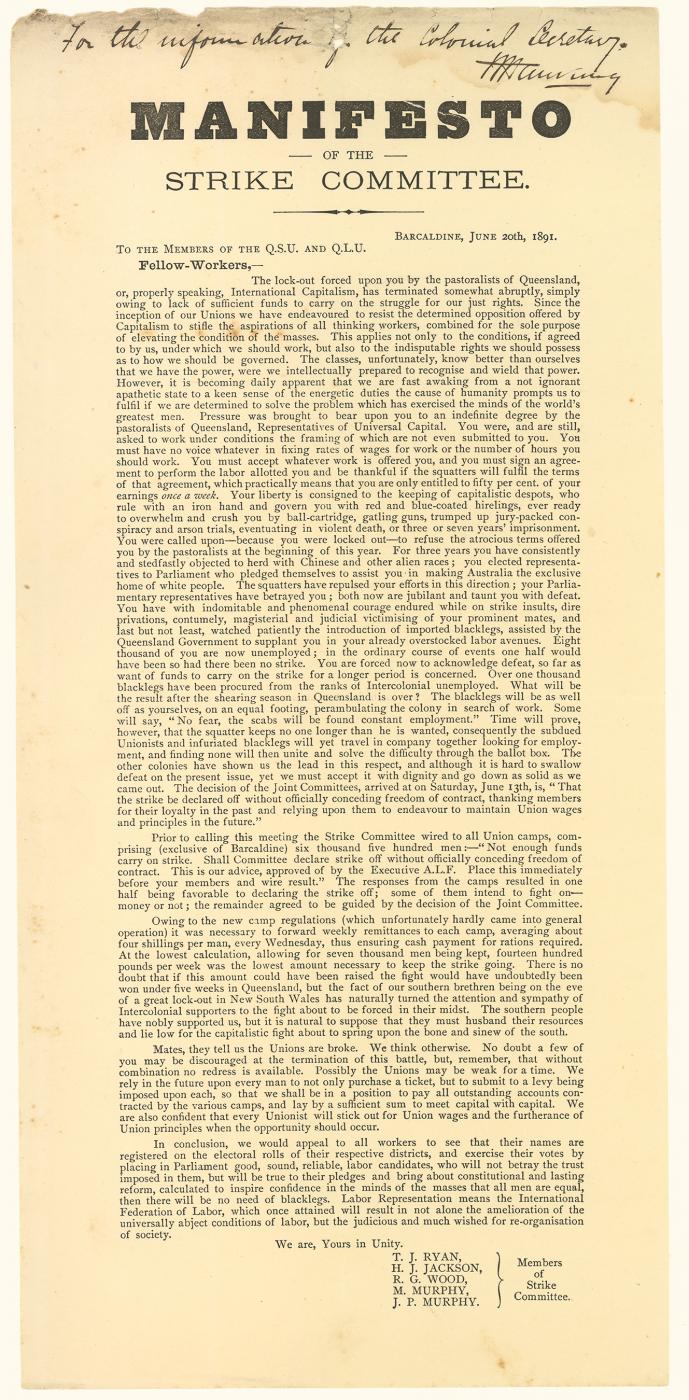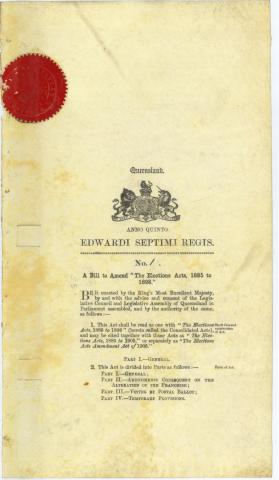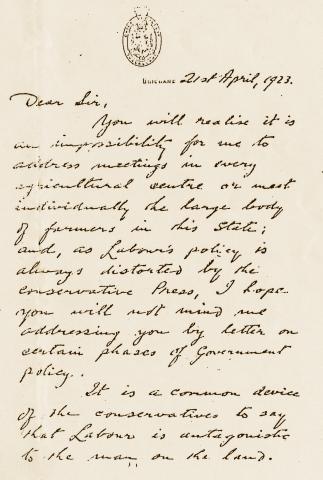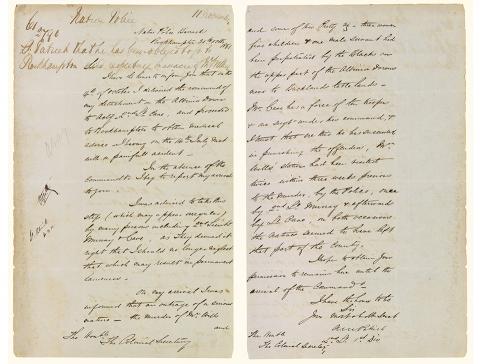
- News of the day
-
Crisis of Shearers' Strike
- Martial Law Threatened -
- The Unionists Defiant -
Mr Ranking, the Government agent at Clermont, has issued a proclamation to-day calling upon the unionist shearers to lay down their arms and disperse quietly to their homes, and threatening that otherwise the whole of the affected districts will be proclaimed under martial law.
A strong body of military will be sent up under the Commandant of Queensland forces to enforce this order. Volunteers are going on active service with the regular troops, and if their numbers are insufficient to ensure the affected districts against further rioting, it is the intention of the Government to obtain outside assistance.
The unionists are greatly exasperated, and defy the authorities to take forcible possession of their arms. The result of the general call out is that 700 labourers in the western and central districts have struck work.
- Background
-
Economic prosperity during the 1870s and 1880s coincided with an upsurge in socialist literature and ideals which was personified in Queensland by the influential journalist William Lane. Paralleling this development was the growth of the trade unions and a tendency to establish central bodies to pursue their objectives collectively. Employers were developing similar strategies, and it was perhaps only a matter of time before these powerful forces clashed. Largely owing to their itinerant occupation and the fact that they were crucial to the pastoral industry, shearers formed the most militant labour organisations, and in late 1890 rural employers decided to test their own strength by drastically reducing the shearing rate.
When negotiations between both camps broke down, shearers in Queensland and New South Wales struck in January 1891 and began forming large camps throughout both colonies. Two months later the General Council of the Australian Labour Federation issued its manifesto which called for social and economic injustices to be addressed. In response, employers brought in non-union labour while the Queensland Government swore in special constables and mobilised its volunteer military force.
Not surprisingly, sporadic outbreaks of violence began to erupt, but rather than force and the resurrection of an archaic statute to imprison 13 union leaders, it was the lack of financial resources which finally defeated the striking shearers. A second widespread strike in 1894 fared no better, but the conservative government’s repressive measures had led to the election of 16 new Labor parliamentarians in 1893. Led by Anderson Dawson they were strong enough in 1899 to briefly form the world’s first Labor government.



